
Roots
The quiet inquiry of a receding hairline often begins with a subtle whisper, a gentle shift in the landscape of one’s scalp. Perhaps it arrives as a barely perceptible change in the temple area, or a feeling of vulnerability where once there was dense growth. This contemplation leads many to consider the daily rituals, the cherished styles that shape our crowning glory.
Can the very acts we undertake to adorn ourselves, to express identity, carry a hidden consequence for the delicate follicular communities residing at our hairline? This question, seemingly simple, unfolds into a deeper consideration of biological resilience, cultural practices, and the intricate dance between external forces and internal well-being.
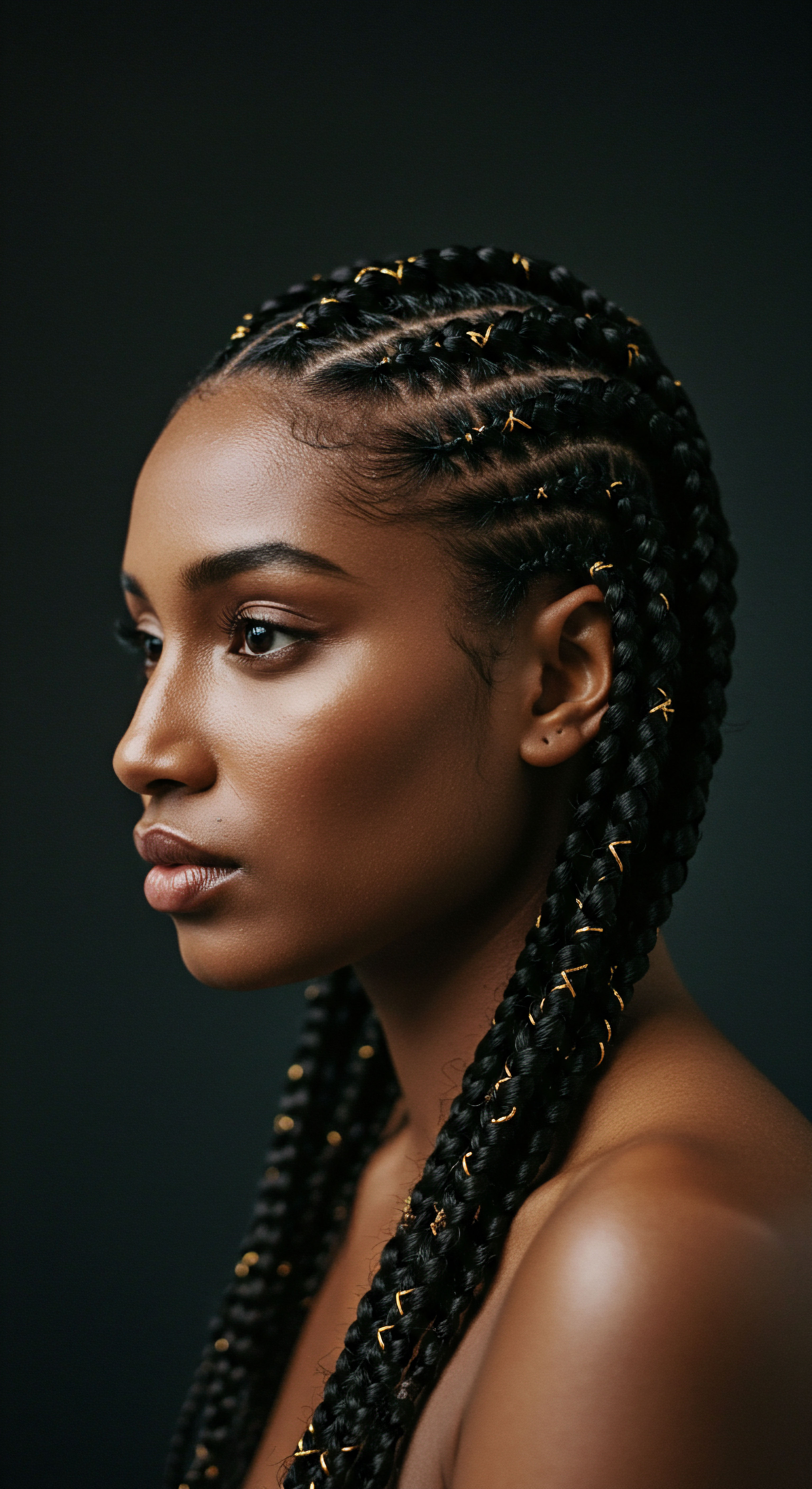
Hair Anatomy and Physiology Specific to Textured Hair
To truly comprehend the impact of external forces, one must first appreciate the inherent architecture of hair. Each strand emerges from a specialized structure nestled within the skin ❉ the Hair Follicle. This tiny organ, a marvel of biological design, dictates the very character of the hair it produces. For textured hair, particularly that of African descent, the follicle exhibits distinct features.
It often possesses an asymmetrical shape, with a retrocurvature at the hair bulb and an S-shaped hair shaft as it grows. This unique morphology creates points of potential weakness along the hair shaft, rendering it susceptible to damage from external stressors. Beyond the follicle’s curvature, textured hair also tends to have fewer anchoring fibers within the dermis, which are critical for holding the hair securely in place. These intrinsic characteristics, while contributing to the remarkable versatility and beauty of textured hair, also present a particular vulnerability to persistent pulling forces.
Understanding the hair growth cycle is also central to this discussion. Hair does not grow indefinitely; it follows a cyclical pattern of growth (anagen), transition (catagen), and rest (telogen). Any significant disruption to this cycle, especially during the active growth phase, can impede healthy hair production. When follicles are subjected to constant tension, their normal function can be disturbed, leading to a premature entry into the resting phase or even permanent damage.

Textured Hair Classification Systems
The spectrum of textured hair is wonderfully broad, encompassing a vast array of curl patterns, densities, and porosities. While various classification systems exist, they primarily serve as guides to understand the general characteristics of hair.
- Curl Pattern ❉ Often categorized by letters and numbers (e.g. 3A, 4C), this describes the shape of the curl, from loose waves to tight coils.
- Density ❉ Refers to the number of individual hair strands on the scalp. Higher density means more hair, which can sometimes feel heavier and thus be subject to greater gravitational pull when styled.
- Porosity ❉ Describes the hair’s ability to absorb and retain moisture, which impacts its resilience and how it responds to products and styling.
Each of these attributes plays a part in how hair responds to tension. Hair with a tighter curl pattern, for instance, might appear shorter than its actual length, and when stretched or pulled, the tension is distributed differently along the curved shaft compared to straighter hair. This inherent characteristic, combined with styling choices, can influence the susceptibility of the hairline to damage.
The hair follicle’s unique shape in textured hair contributes to its vulnerability to consistent pulling.
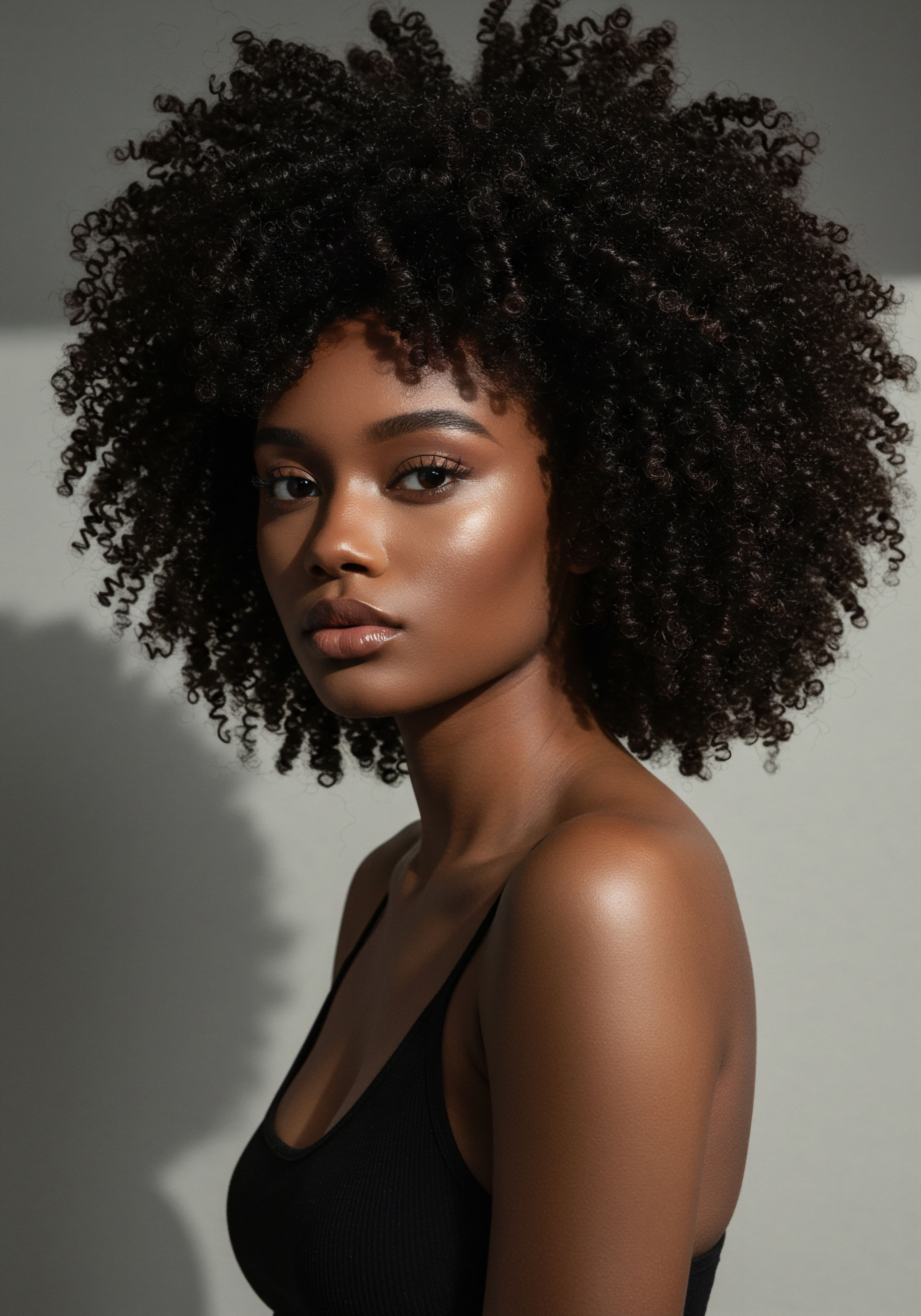
The Essential Lexicon of Textured Hair
Conversations surrounding textured hair benefit from a shared vocabulary, ensuring clarity and precision.
- Alopecia ❉ A general medical term for hair loss.
- Traction Alopecia ❉ A specific type of hair loss caused by prolonged or repeated tension on hair follicles. It frequently affects the hairline and temples.
- Follicular Miniaturization ❉ The process where hair follicles shrink over time, producing progressively finer, shorter, and less pigmented hair. This is a hallmark of various hair loss conditions, including traction alopecia in its early stages.
- Scalp Tension ❉ The physical strain applied to the scalp and hair roots, often a result of tight styling.
These terms provide a framework for discussing the physical manifestations of stress on the hairline. The distinction between general hair loss and traction alopecia is significant, as the latter directly points to mechanical force as the primary cause.
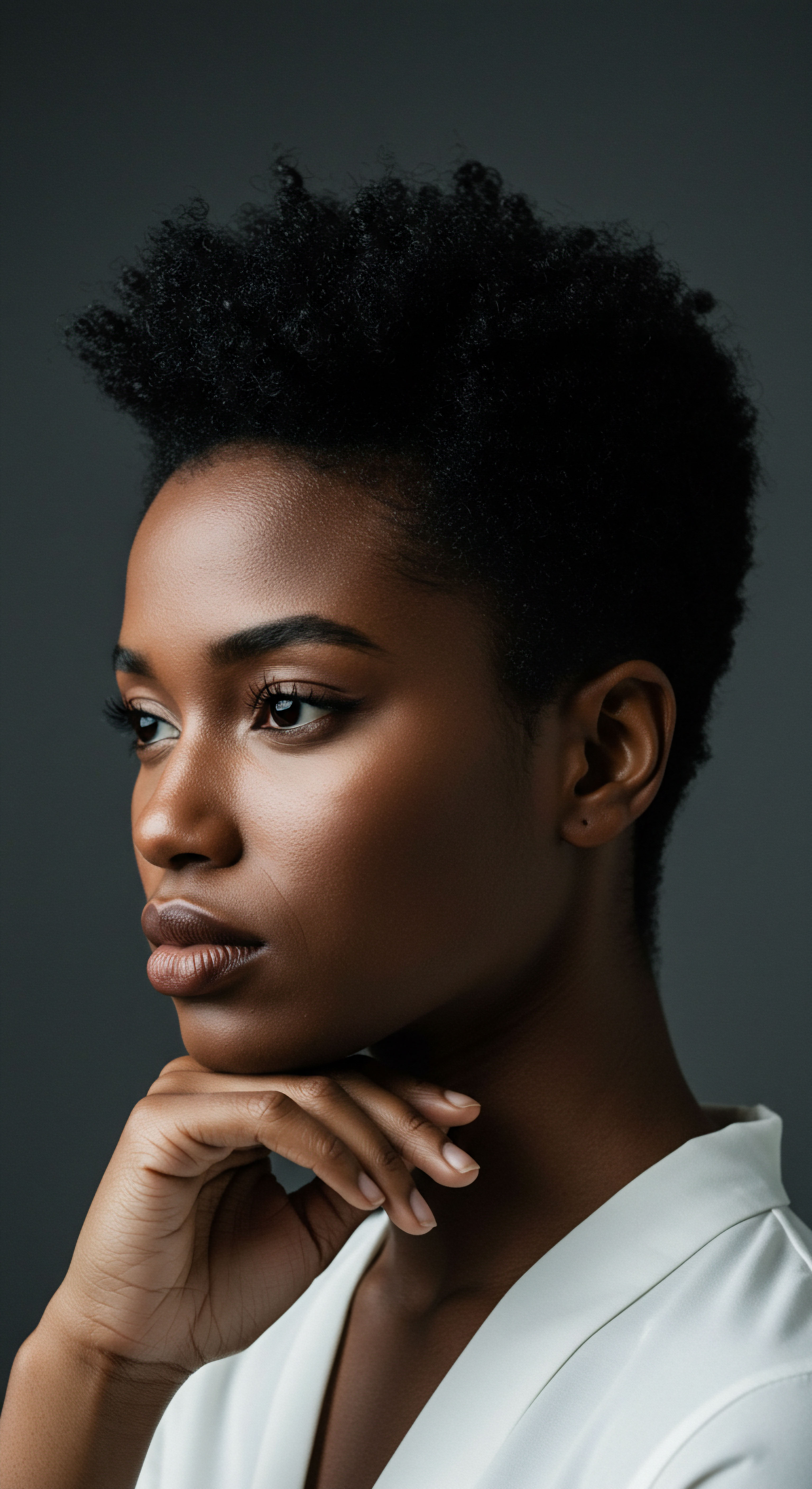
Hair Growth Cycles and Influencing Factors
Hair follicles cycle through three primary phases:
- Anagen ❉ The active growth phase, lasting from two to seven years.
- Catagen ❉ A short transitional phase, lasting about ten days, where hair growth stops.
- Telogen ❉ The resting phase, lasting about three months, after which the hair sheds.
Numerous factors can influence these cycles, including genetics, nutrition, stress, and, crucially, mechanical stress. When hair is consistently pulled tightly, it can prematurely dislodge hair from the anagen phase or cause follicles to enter a prolonged telogen phase, reducing overall hair density. In more severe or prolonged cases, this persistent tension can lead to permanent damage to the follicular stem cells, preventing new hair growth altogether. This permanent damage often results in scarring, a sign that the delicate machinery of the follicle has been irreversibly altered.

Ritual
Our daily hair practices, the careful shaping and securing of strands, hold a particular significance. These actions, whether born of cultural tradition, personal preference, or the demands of daily life, are more than mere styling. They are rituals, repeated gestures that define our relationship with our hair. As we seek practical wisdom and actionable understanding concerning the hairline, it becomes important to reflect upon these routines.
Can the very devotion to certain styles, the consistent gathering and binding of hair, inadvertently contribute to a fragile hairline? This section explores the interplay between styling techniques, the tools we employ, and the potential effects on the hairline, guiding us toward practices that honor both beauty and well-being.

Protective Styling Encyclopedia
Protective styles, designed to shield hair from environmental exposure and daily manipulation, are a cornerstone of textured hair care. They encompass a wide array of options, each with its own method of application and potential impact.
- Braids ❉ This broad category includes cornrows, box braids, and various extensions. While braids can reduce daily styling stress, if installed too tightly, they exert significant tension on the scalp, particularly at the hairline.
- Twists ❉ Similar to braids, twists (such as Senegalese twists or Marley twists) can also become problematic if the initial tension is excessive.
- Buns and Ponytails ❉ High, sleek buns or ponytails, especially when secured tightly and worn consistently, can pull the hair back from the face and temples with considerable force. This continuous tension can lead to hairline recession.
- Wigs and Weaves ❉ These offer versatility and can protect natural hair. However, if the foundation braids beneath a wig are too tight, or if weaves are sewn in with excessive tension, they can induce hairline stress. The weight of extensions can also add to the pulling force.
The intention behind protective styling is sound ❉ to minimize manipulation and promote length retention. Yet, the execution of these styles holds the key to their true benefit. When applied with undue force, the protective aspect can diminish, giving way to unwanted strain.

Natural Styling and Definition Techniques
Embracing natural texture involves techniques that define curl patterns without external tension.
- Wash and Go ❉ This involves cleansing, conditioning, and applying products to enhance natural curl definition, allowing hair to air dry or diffuse. This method typically places minimal stress on the hairline.
- Twist-Outs and Braid-Outs ❉ These techniques involve creating two-strand twists or braids on damp hair, allowing them to dry, and then carefully unraveling for defined waves or curls. If these are done loosely, the tension is minimal. However, some individuals might inadvertently create too much tension at the roots in pursuit of a more defined look, especially if the sections are very small and pulled taut.
The beauty of natural styling lies in its potential gentleness. When approaches prioritize the hair’s natural inclination rather than forcing a shape, the hairline remains undisturbed.
Gentle styling, whether natural or protective, is key to safeguarding the delicate hairline.

Wigs and Hair Extensions Mastery
The world of wigs and extensions offers transformative possibilities. Yet, their secure attachment can, at times, become a source of concern for the hairline.
When installing extensions, whether clip-ins, tape-ins, or sew-ins, the weight and tension at the attachment points are crucial considerations. For sew-in weaves, the foundation braids must be sturdy but not excessively tight. The practice of “tightening” weaves, often perceived as ensuring longevity, can inflict continuous pulling on the perimeter hair, leading to localized thinning.
Similarly, wigs that rely on combs or adjustable straps can place pressure on the hairline if not fitted properly or if worn for extended periods without relief. A common scenario involves repeated placement of wig combs in the same hairline spot, which can cause friction and pulling over time.

Heat Styling and Thermal Reconditioning
Heat styling, including flat ironing, blow-drying, and thermal reconditioning treatments, alters the hair’s structure through the application of heat. While it does not directly cause traction, it can compromise the hair’s resilience, making it more vulnerable to subsequent mechanical stress. Hair that has undergone chemical relaxation or frequent heat styling may be more susceptible to breakage when subjected to pulling forces. The hair shaft becomes weakened, reducing its ability to withstand the tension from tight styles.
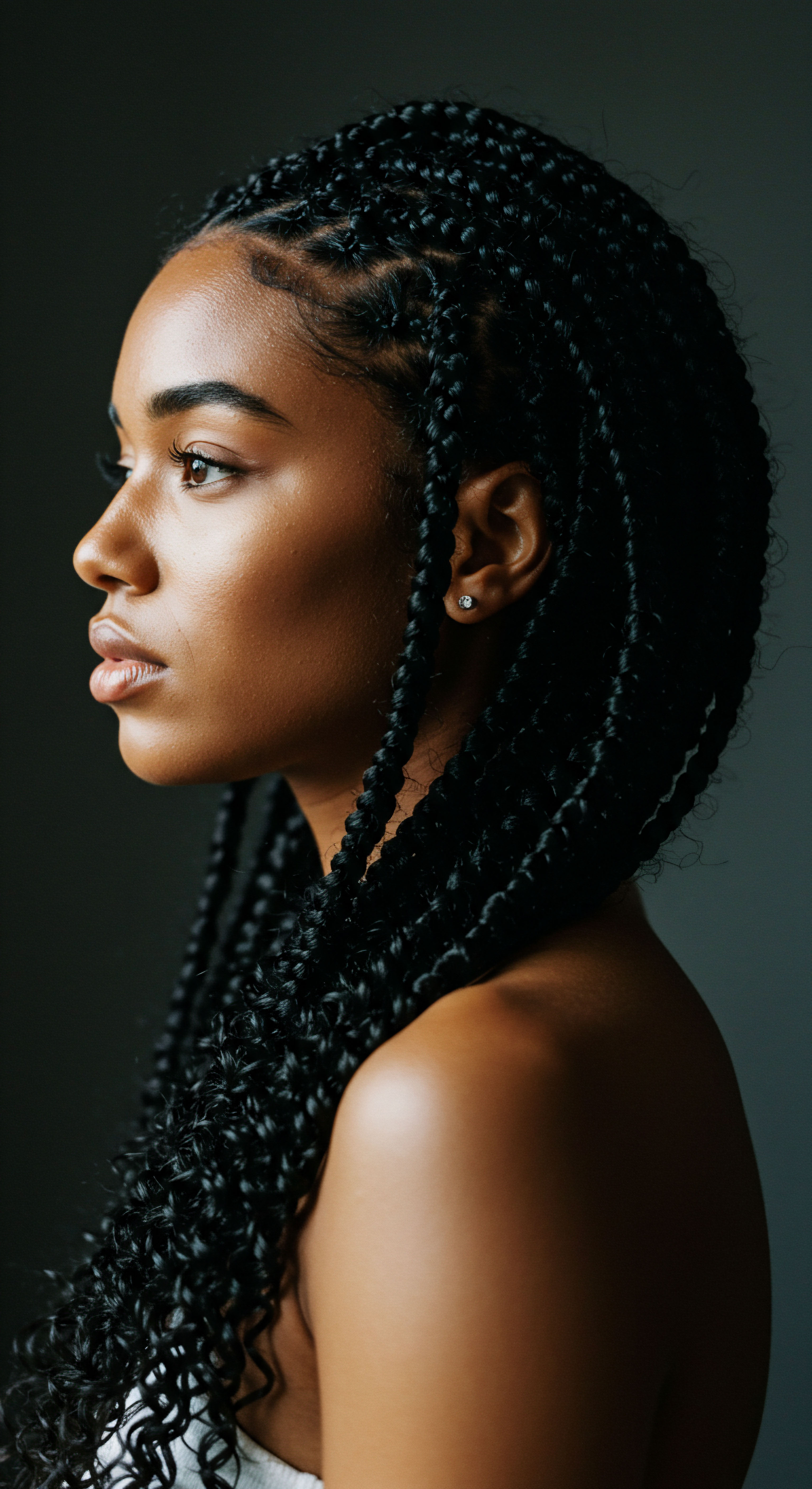
The Complete Textured Hair Toolkit
The tools we use are extensions of our hands, shaping our hair with every motion.
- Hair Ties and Bands ❉ Opt for fabric-covered elastic bands or scrunchies instead of rubber bands or those with metal clasps. These gentler options reduce friction and direct pulling on the hair shaft.
- Combs and Brushes ❉ Wide-tooth combs and brushes with flexible bristles are preferred for detangling, minimizing breakage and strain on the roots. Aggressive detangling, especially on dry hair, can contribute to hairline stress.
- Accessories ❉ Hair clips, headbands, and scarves, when worn too tightly or consistently in the same spot, can also exert localized pressure, potentially leading to hair loss in those areas. The constant rubbing of a hat or head scarf, especially over tightly pulled hair, can also induce traction alopecia.
The deliberate choice of tools, coupled with mindful application, forms a protective shield for the hairline, allowing for creative expression without compromising hair health.

Relay
The question of whether tight hairstyles can permanently affect the hairline extends beyond the immediate sensation of tension, reaching into the very biological and cultural currents that shape our hair journeys. This exploration invites a deeper consideration, moving past surface-level observations to understand the intricate interplay of factors that determine hairline resilience. How do historical practices, societal expectations, and individual biological predispositions converge to influence this delicate boundary? This section aims to provide profound insights, drawing on research and cultural understanding to illuminate the complexities of hairline health in the context of tight styling.

What Happens to the Hair Follicle Under Sustained Tension?
When hair is subjected to consistent, forceful pulling, the hair follicle, the very anchor of each strand, undergoes a series of changes. Initially, the stress can cause inflammation around the follicle, a condition known as Traction Folliculitis. This may manifest as small, red bumps or tenderness along the hairline.
If the tension continues, the follicle enters a state of distress. It can prematurely shift from its active growth phase (anagen) into the resting phase (telogen), leading to increased shedding.
Over prolonged periods, this mechanical stress can lead to Follicular Miniaturization, where the hair produced by the follicle becomes progressively thinner, shorter, and less pigmented. This is a crucial early indicator that the follicle’s ability to produce robust hair is compromised. A study published in the International Journal of Trichology suggests that permanent baldness in some forms of alopecia occurs when hair follicles lose their attachment to the arrector pili muscle, a small muscle connected to the follicle. If the hair has miniaturized but maintains this connection, the hair loss may be reversible.
However, persistent, severe tension can ultimately lead to irreversible damage, causing the follicle to scar and cease hair production entirely. This scarring, termed Cicatricial Alopecia, signifies permanent hair loss in the affected areas.
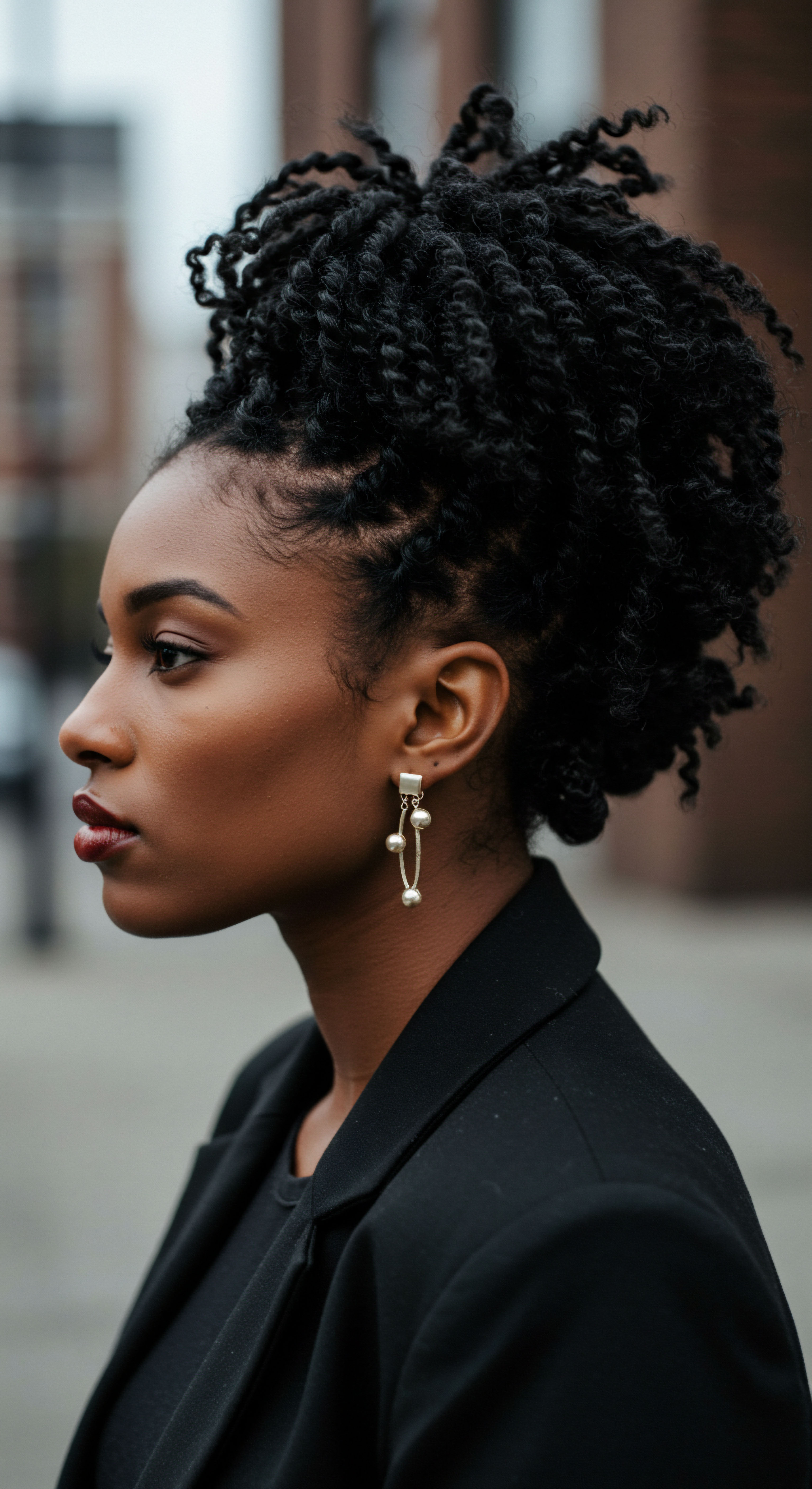
Are Certain Hair Types More Susceptible to Hairline Damage?
While anyone can develop traction alopecia, individuals with textured hair, particularly those of African descent, face a higher susceptibility. Research indicates that the unique structural characteristics of Afro-textured hair follicles contribute to this increased vulnerability. The asymmetrical shape of the African hair follicle, with its curved bulb and S-shaped shaft, creates points of weakness that are more prone to damage from pulling forces. Additionally, these follicles may possess fewer anchoring fibers within the dermis, further diminishing their ability to withstand constant tension.
A study in South Africa found that 31.7% of women and 9.4% of children experienced traction alopecia, with prevalence increasing with age. This data highlights a significant disproportionate impact within specific communities. The combination of inherent hair characteristics and prevalent styling practices within these cultures often places the hairline at greater risk.
Traction alopecia, a preventable form of hair loss, disproportionately affects women of African descent due to unique hair follicle characteristics and styling practices.

How Do Cultural Hair Practices Influence Hairline Health?
Hair practices across cultures are deeply rooted in identity, tradition, and aesthetic expression. For communities of African descent, styles like braids, cornrows, and weaves hold profound cultural and historical significance, often serving as protective measures or symbols of status and belonging. However, the traditional methods of installation, which sometimes prioritize longevity and neatness through extreme tightness, can inadvertently contribute to hairline recession.
For instance, a study published in 2008 by Khumalo et al. revealed that South African women or children who reported experiencing tight, painful braids were almost twice as likely to have traction alopecia (odds ratio = 1.94, P = 0.004). This statistical link between immediate discomfort during styling and the later diagnosis of traction alopecia underscores the importance of mindful application. The cultural acceptance of pain during styling as a sign of a well-done style, as observed in some communities, may inadvertently perpetuate practices that harm the hairline.
| Population Group South African Women |
| Observed Prevalence 31.7% |
| Source Khumalo et al. |
| Population Group South African Children (6-7 years) |
| Observed Prevalence 8.6% |
| Source Khumalo et al. |
| Population Group South African Children (17-21 years) |
| Observed Prevalence 21.7% |
| Source Khumalo et al. |
| Population Group African American Girls (5.4-14.3 years) |
| Observed Prevalence 18% |
| Source Wright et al. (cited in Akingbola & Vyas) |
| Population Group Cameroonian Women |
| Observed Prevalence 34.5% |
| Source Nga et al. |
| Population Group North Sudanese Women |
| Observed Prevalence 25.0% |
| Source Abdelaziz et al. |
| Population Group Data highlights the varied, yet often significant, prevalence of traction alopecia across different populations, particularly those with a heritage of tight styling practices. |
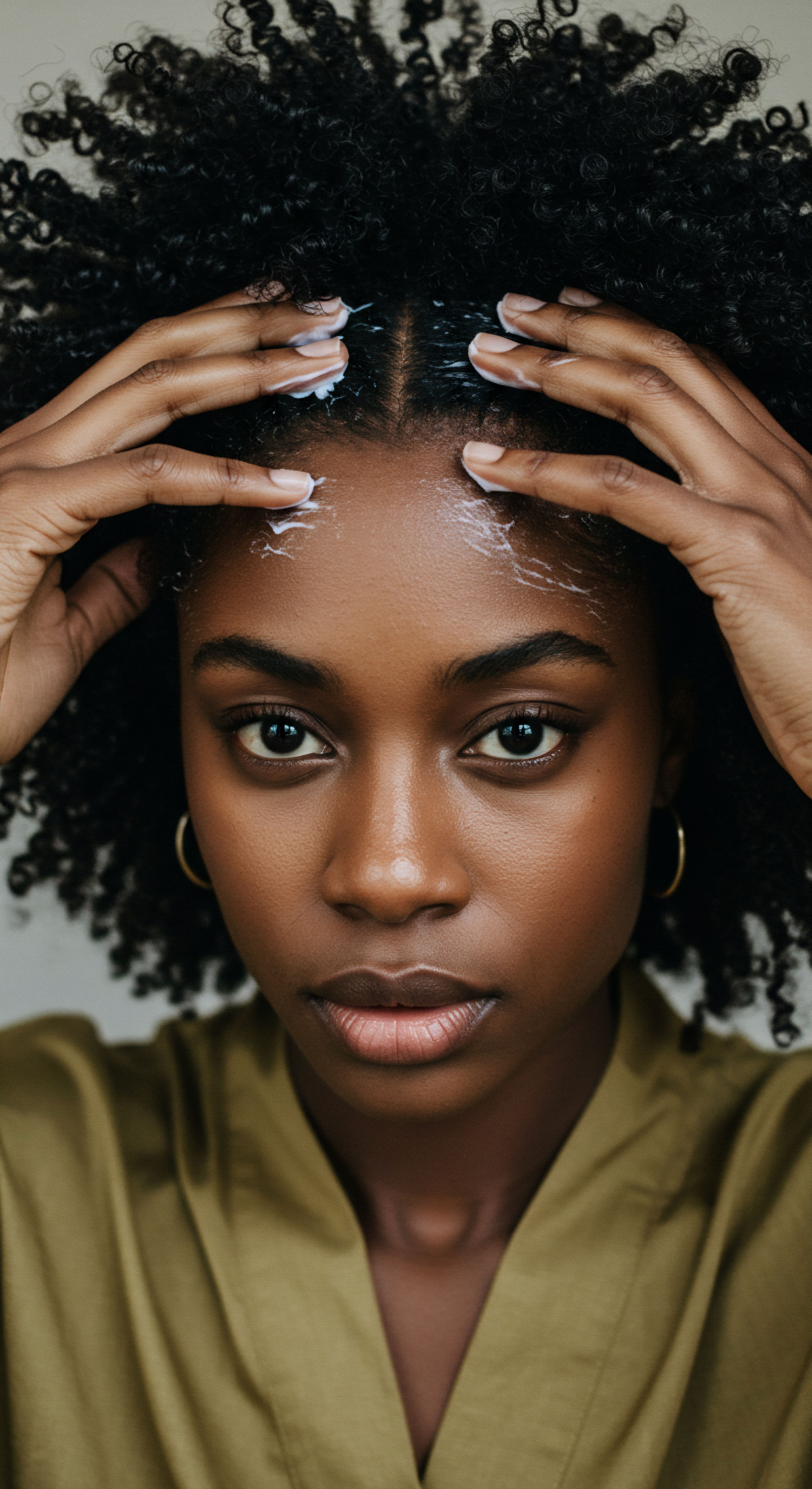
What are the Psychosocial Implications of Hairline Recession?
Hair loss, particularly at the hairline, carries significant psychosocial weight. For many, hair is deeply intertwined with self-perception, identity, and social acceptance. A receding hairline can trigger feelings of self-consciousness, anxiety, and diminished self-esteem.
Studies have shown a connection between hair loss and psychological distress, including anxiety and depression. The visual change can lead individuals to reduce social engagements, sometimes resulting in self-isolation.
The impact is particularly acute in communities where hair holds profound cultural or aesthetic value. The shame and silence surrounding hair loss, as reported by women of African descent, can exacerbate the emotional burden. A study by Boston University’s Slone Epidemiology Center found that almost 48% of surveyed women of African descent had experienced hair loss, primarily from traction alopecia, with many attributing it to a widespread belief that braids and plaits promote growth, alongside societal pressures to conform to certain beauty standards. This reveals a complex interaction between beauty ideals, cultural practices, and psychological well-being.

Can Hairline Damage from Tight Hairstyles Be Reversed?
The reversibility of hairline damage from tight hairstyles depends heavily on the stage of traction alopecia. In its early phases, when the follicles are inflamed but not yet scarred, cessation of the offending styling practices can lead to hair regrowth. This early stage is characterized by inflammation and possibly some hair miniaturization. Signs like pain during styling, small bumps (folliculitis), or hair breakage are crucial warnings.
However, if persistent tension continues, the condition progresses to a scarring stage, known as Late Traction Alopecia or Cicatricial Alopecia. Once scarring of the hair follicles occurs, the damage becomes permanent, and hair will not regrow in those areas. At this point, medical interventions like topical minoxidil might offer some benefit for non-scarring areas, with a 2% concentration showing some efficacy for traction alopecia in systematic reviews. However, for permanently scarred areas, hair transplantation may become the only effective option.
Prevention remains the most effective strategy. Choosing looser styles, varying hairstyles regularly to distribute tension, and avoiding excessive weight from extensions are all critical steps. Early recognition of symptoms and prompt intervention can significantly alter the outcome, preserving the hairline’s vitality.

Reflection
The delicate boundary of our hairline, often seen as a simple aesthetic feature, holds within its subtle contours a profound story. It speaks of ancestral practices, of modern expressions, and of the intimate relationship between our physical self and our deepest sense of identity. The journey to understand the impact of tight hairstyles on this sensitive area leads us not to rigid rules, but to a deeper appreciation for thoughtful care and conscious choice. It encourages us to listen to the quiet messages our hair sends, to honor its resilience, and to cultivate practices that allow both our strands and our spirit to thrive in gentle, enduring beauty.

References
- Akingbola, C. O. & Vyas, J. (2017). Traction alopecia ❉ A neglected entity in 2017. Indian Journal of Dermatology, Venereology, and Leprology, 83(6), 644-649.
- Billero, V. & Miteva, M. (2018). Traction alopecia ❉ the root of the problem. Clinical, Cosmetic and Investigational Dermatology, 11, 149-159.
- Khumalo, N. P. Jessop, S. Gumedze, F. & Ehrlich, R. (2008). Hairdressing and the prevalence of scalp disease in African schoolchildren. British Journal of Dermatology, 159(4), 920-925.
- Nga, N. E. Nguembi, E. N. Nguembi, S. E. & Nkama, L. T. (2022). Hair Care and Epidemiological-Clinical Profile of Traction Alopecia Among Women in Hair Salons in Yaoundé, Cameroon. Skin Health and Disease, 2(3), e156.
- Abdelaziz, M. Elgashgari, A. & Almalki, R. (2023). Prevalence and Associated Factors of Traction Alopecia in Women in North Sudan ❉ A Community-Based, Cross-Sectional Study. Dermatology and Therapy, 13(12), 2969-2980.
- Shapiro, J. & Otberg, N. (2015). Hair Loss and Restoration. CRC Press.
- Sinclair, R. Weger, N. & Hammond, L. (2005). The lack of significant changes in scalp hair follicle density with advancing age. British Journal of Dermatology, 153(5), 903-908.
- Miteva, M. & Tosti, A. (2014). Traction alopecia. Dermatologic Therapy, 27(6), 335-339.
- Gupta, M. & Sharma, R. (2019). The efficacy of topical minoxidil for non-scarring alopecia ❉ A systematic review. Journal of Drugs in Dermatology, 18(2), 155-160.
- Poon, T. L. & Khumalo, N. P. (2020). Hair care practices from the diaspora ❉ A look at Africa, America, and Europe. Journal of the American Academy of Dermatology, 82(6), 1515-1523.